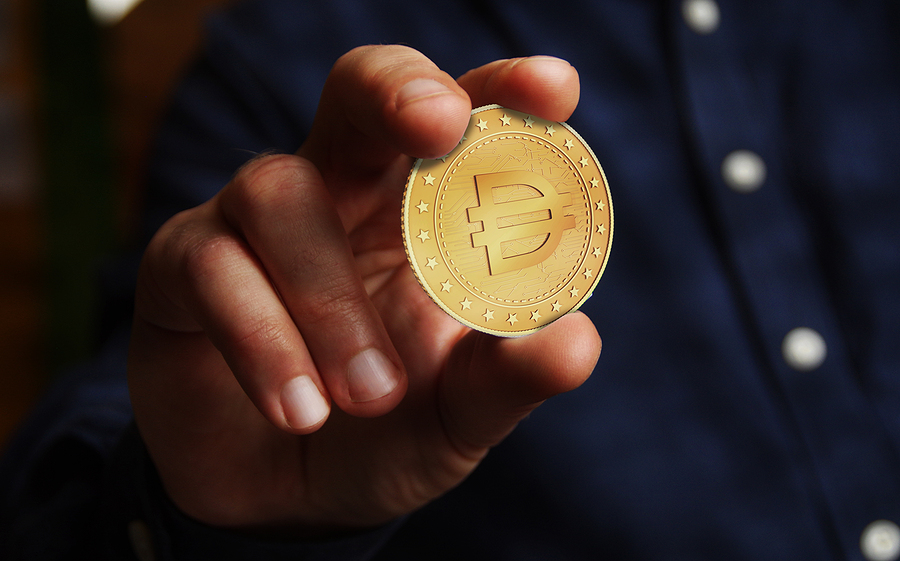Stablecoins deal with price fluctuations and volatility of the cryptocurrencies by tying their value to other much more stable assets, these can include fiat currencies. A fiat currency or money is the currency we all use on a day to day basis, such as euros or dollars. These currencies are issued by the governments.
There is a wide range of stablecoins, and these stablecoins can use a wide variety of different types of assets as backing, such as fiat currencies, gold, silver or other precious metals, other cryptocurrencies or other types of investments. To develop a better understanding about different kinds of stablecoins, we will now compare some of the most popular ones.
Tether (USDT)
Tether launched USDT in 2014, which is one of the oldest and the most popular stablecoins in the market. It was first devised to help arbitrage traders so they could quickly exchange cryptocurrencies when the price of the cryptocurrency is different on two different exchange platforms.
Despite being the market leader, USDT has gone through some negative events in the past that have left a stain on its reputation. One such remarkable case occurred in 2018 when Tether produced new USDT coins but did not guarantee a true 1 to1 peg with the U.S. Dollar. Nevertheless, today, USDT is still the most well-known stablecoin and remains on top of the stablecoins list in terms of volume and market cap.
Moreover, in 2020, Tether also launched XAUT, which is a gold-backed option. This will help the company strengthen their position, even when there is an increasing number of rival stablecoins, in the market.
TrueUSD (TUSD)
TrueUSD or TUSD is a cryptocurrency that is also backed 1 to 1 with the U.S. Dollar. TUSD is the first token created on TrustToken, which is a platform to create stablecoins. While this stablecoin is relatively new in the market, it is quickly catching up.
TUSD offers many benefits, including strong legal protection and trustworthy fund management, with the help of regular attestations provided to the TUSD holders through escrow accounts. While TUSD is not as well-known as Tether USDT, it is more secure as the data is regularly audited and they have maintained transparency.
Moreover, TrueUSD is an Ethereum Blockchain based ERC20 token controlled by a smart contract. Tether USDT on the other hand is a Bitcoin blockchain based token built on the Omni layer. It’s more risky to invest in Tether USDT as it is not as secure as TrueUSD. However, it is important to note that the market cap is higher for Tether USDT and it is doing very well in the market.
USD Coin (USDC)
USD Coin (USDC) is another well-known stablecoin that is pegged to the U.S. Dollar. USDC, however, has a very impressive list of backers including Silvergate, US Bancorp and Goldman Sachs. It is worth noting that the stablecoin was a result of the joint-deal between Circle and Coinbase in 2018.
USDC focuses on transparency for its partners and users, which explains why some banks are so interested in this stablecoin. Moreover, it has a dedicated app that lets the users send money to other wallets, convert their holdings to fiat, and earn interest, among many other different fintech-related features.
Dai
Dai is a stablecoin that operates on the Ethereum blockchains platform. Unlike USDT and USDC, this stablecoin is backed by the value of Ether (ETH) through smart contracts. This makes Dai a completely decentralized cryptocurrency, which is why many crypto enthusiasts, users and experts admire this stablecoin.
Dai is the standard currency for Ethereum’s DeFi (decentralized finance) ecosystem, which refers to a number of financial products and services that can be accessed easily on Ethereum’s platform. This means that the demand for Dai will continue to increase as long as DeFi continues to grow, which is very likely because the decentralized finance industry is growing exponentially as more businesses aim to provide the complete decentralization of the financial transaction of the users. We can expect to see Dai develop and establish itself as a leading stablecoin.
Paxos Standard (PAX)
In early 2018, Paxos (PAX) was created as an alternative to Tether USDT. PAX also operates on the Ethereum blockchain and instead of operating only as a stablecoin, it can be exchanged with other ERC-20 tokens. The company burns PAX every time it is redeemed to deal with inflation.
PAX is also regulated by well-known financial institutions, such as the New York State Department of Financial Services. Moreover, very low transaction costs and other benefits make PAX one of the best stablecoins available in the market for traders.
Several of these cryptocurrencies are now held and traded on digital platforms like Bitiq. There can be no doubt anymore that virtual economy has become a force unto itself; it shapes up a new digital economy that is as important as it has ever been. Regulators now allow online trading, so there are fewer legal issues than before.
Image Source: BigStockPhoto.com (Licensed)
Disclaimer
Cryptocurrency products are unregulated and can be highly risky. There may be no regulatory recourse for any loss from such transactions.
The information on this website is provided for educational, informational, and entertainment purposes only, without any express or implied warranty of any kind, including warranties of accuracy, completeness, or fitness for any particular purpose.
The information contained in or provided from or through this website and related social media posts is not intended to be and does not constitute financial advice, investment advice, trading advice, or any other advice.
The information on this website and provided from or through this website is general in nature and is not specific to you the user or anyone else. You should not make any decision, financial, investment, trading, or otherwise, based on any of the information presented on this website without undertaking independent due diligence and consultation with a professional broker or financial advisory.
You understand that you are using any and all Information available on or through this website at your own risk.
The trading of Bitcoins, alternative cryptocurrencies has potential rewards, and it also has potential risks involved. Trading may not be suitable for all people. Anyone wishing to invest should seek his or her own independent financial or professional advice.
Site Disclaimer
The Content in this post and on this site is for informational and entertainment purposes only. You should not construe any such information or other material as legal, tax, investment, financial, or other advice. Nothing contained on our Site constitutes a solicitation, recommendation, endorsement, or offer by HII or any third party service provider to buy or sell any securities or other financial instruments.
Nothing in this post or on this site constitutes professional and/or financial advice. You alone assume the sole responsibility of evaluating the merits and risks associated with the use of any information or other content in this post or on this site.
You recognize that when making investments, an investor may get back less than the amount invested. Information on past performance, where given, is not necessarily a guide to future performance.
Related Categories: Cryptocurrency, Reviews







